Intentar ORO - Gratis
Tammy Ma Experimental Physicist
Muse Science Magazine for Kids
|July/August 2018
Tammy Ma’s job involves firing lots of powerful lasers: 192 of them to be exact. She works at the National Ignition Facility (NIF), home to the world’s largest and most energetic laser system. Three football fields could fit inside the building. One of the original goals of the giant facility was to harness fusion energy.

In a fusion experiment, Ma and her team place a capsule of fuel in the middle of a target chamber. All 192 lasers fire onto the capsule, causing intense pressure and a temperature hotter than the center of the sun. Under these conditions, some atoms inside the capsule join together, releasing a burst of fusion energy. To make that energy useful, though, the capsule must release more energy than it takes to fire the lasers. This is called ignition.
BEFORE NIF WAS BUILT, THE TEAM PREDICTED THAT YOU’D REACH IGNITION BY 2012. BUT THAT DATE CAME AND WENT WITHOUT REACHING THE GOAL. DO YOU THINK YOU’LL EVER GET THERE?
I undoubtedly think so! When you take on a huge scientific challenge like this, you do the best you can with the knowledge you have at that point and the technology you have at that time. We made the best projections we could.
RIGHT, NO ONE HAD EVER BUILT A LASER SYSTEM THAT BIG BEFORE, SO IT WAS HARD TO KNOW WHETHER IT WOULD WORK LIKE COMPUTER SIMULATIONS PREDICTED.
Esta historia es de la edición July/August 2018 de Muse Science Magazine for Kids.
Suscríbete a Magzter GOLD para acceder a miles de historias premium seleccionadas y a más de 9000 revistas y periódicos.
¿Ya eres suscriptor? Iniciar sesión
MÁS HISTORIAS DE Muse Science Magazine for Kids
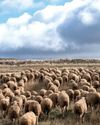
Muse Science Magazine for Kids
ANIMAL FIREFIGHTER TO THE RESCUE
Can animals help manage the risks of deadly wildfires?
3 mins
Muse July 2025: The Story Behind Wildfires

Muse Science Magazine for Kids
FIRE DANGER
WHY THE RISK OF WILDFIRES KEEPS GROWING
4 mins
Muse July 2025: The Story Behind Wildfires
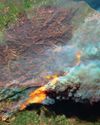
Muse Science Magazine for Kids
The Miller NEW Normal
WHAT TODAY’S WILDFIRES TELL US ABOUT OUR FUTURE
8 mins
Muse July 2025: The Story Behind Wildfires
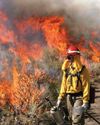
Muse Science Magazine for Kids
WOMEN AND FIREFIGHTING: A GOOD FIT
Jessica Gardetto is a firefighter. Her father was, too. “I grew up with my dad coming home smelling like wildfire and covered in soot,” she says.
1 min
Muse July 2025: The Story Behind Wildfires

Muse Science Magazine for Kids
What is happening on your fingertips when they get all wrinkly in a hot tub?
—Felix G., age 10, Montana
1 mins
Muse July 2025: The Story Behind Wildfires

Muse Science Magazine for Kids
WHEN the SMOKE CLEARS
THE LINGERING EFFECTS OF THE RECENT PACIFIC PALISADES AND ALTADENA EATON FIRES
6 mins
Muse July 2025: The Story Behind Wildfires

Muse Science Magazine for Kids
PICKING TEAMS
Keep it fair with a strategy that relies on geometry.
2 mins
Muse July 2025: The Story Behind Wildfires
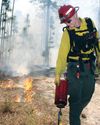
Muse Science Magazine for Kids
SHAN CAMMACK
WILDLIFE BIOLOGIST AND FIRE SAFETY OFFICER
3 mins
Muse July 2025: The Story Behind Wildfires
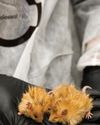
Muse Science Magazine for Kids
Scientists Create Mice With Woolly Mammoth-Like Fur
RESEARCHERS AT A COMPANY IN TEXAS ARE WORKING TO CREATE A LIVING ANIMAL THAT RESEMBLES THE EXTINCT WOOLLY MAMMOTH. Recently, they produced mice with traits of the large mammal. The mice all have coats with mammoth-like fur, and some of the small mammals also have genes that help them store fat. Both features would help the animals survive in the cold Arctic, where the woolly mammoth once lived.
1 min
Muse July 2025: The Story Behind Wildfires

Muse Science Magazine for Kids
Cool Sunshade Added to the Nancy Roman Space Telescope
THE NANCY ROMAN SPACE TELESCOPE IS A NEW TELESCOPE THAT NASA IS BUILDING AND WILL LAUNCH INTO SPACE, LIKELY IN EARLY 2027.
1 min
Muse July 2025: The Story Behind Wildfires
Translate
Change font size

